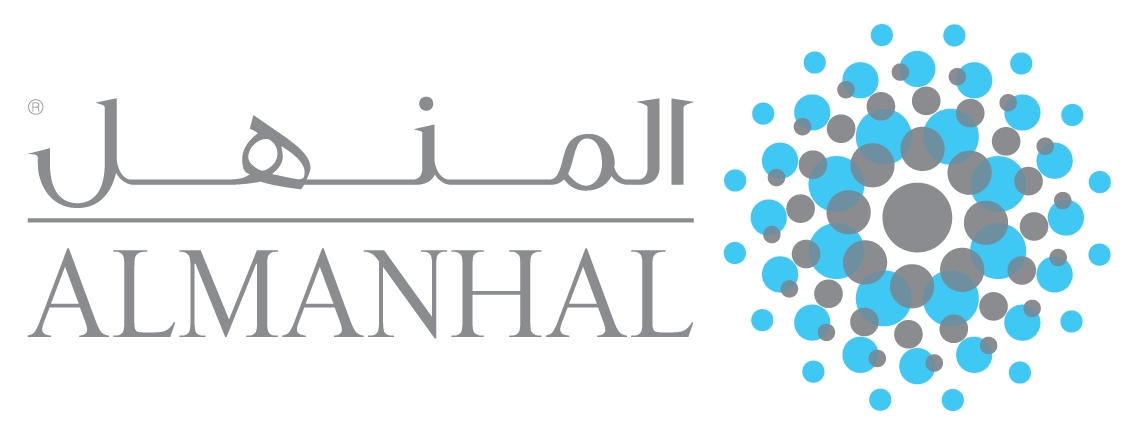Dynamic Linkages Among SAMI Nations (Saudi Arabia, Turkey, Malaysia, Indonesia) Equity Markets
DOI:
https://doi.org/10.31436/jif.v6i0.252Keywords:
Dynamic linkage, Equity Market, OIC, SAMI, VECMAbstract
This research paper investigates the dynamic linkages among four selected equity markets from Organization of the Islamic Conference (OIC) members. The four countries comprised the proposed Muslim BRICS called SAMI: Saudi Arabia, Ankara (Turkey), Malaysia and Indonesia. The study explores the short and long run linkages between these stock markets for the period spanning from January 2000 to September 2014 split into two sub-periods before and after the global financial crisis. Through applying Johansen co-integration analysis we found that the Indonesian, Malaysian, Saudi Arabian and Turkish stock markets are co-integrated during both periods. Emphasis was on the after crisis period where two co-integrating equations have been recorded. Granger causality test employed based on VECM further revealed that only a unidirectional relationship exist in the pre-crisis period between Saudi Arabia and Indonesia. However, bidirectional causality relationships were detected between almost all the four stock markets during the post-crisis period.
Downloads
References
Aggarwal, R., & Kyaw, N.A. (2005). Equity market integration in the NAFTA region: Evidence from unit root and cointegration tests. International Review of Financial Analysis, 14(4), 393-406.
Alkulaib, Y. A., Najand, M. & Mashayekh, A. (2009). Dynamic linkages among equity markets in the Middle East and North African countries. Journal of Multinational Financial Management, 19(1), 43-53.
Antoniou, A.P., Gioia M, & Stevens, I. (2007). Market-wide and sectoral integration: Evidence from the UK, USA and Europe. Managerial Finance, 33(3), 173-194.
Arouri, M.E., & Jawadi, F. (2009). Stock market integration in emerging countries: further evidence from the Philippines and Mexico. Paper presented at the 2nd International Financial Research Forum, Paris, March.
Asteriou, D., & Hall, S. G. (2011). Applied econometrics: New York, Palgrave Macmillan.
Balasubramanyan, L. (2004). Do Time-Varying Covariances, Volatility Comovement and Spillover Matter? Pennsylvania State University Paper, 1(2).
Barberis, N., Shleifer, A, & Wurgler, J. (2005). Comovement. Journal of Financial Economics, 75(2), 283-317.
Beechey, M., Gruen, D.W.R, & Vickery, J. (2000). The efficient market hypothesis: a survey: Reserve Bank of Australia, Economic Research Department.
Bekaert, G., & Harvey, C.R. (1995). Timeâ€varying world market integration. The Journal of Finance, 50(2), 403-444.
Bekaert, G., Hodrick., R.J., & Zhang, X. (2009). International stock return comovements. The Journal of Finance, 64(6), 2591-2626.
Bessler, D. A., & Yang, J. (2003). The structure of interdependence in international stock markets. Journal of International Money and Finance, 22(2), 261-287.
Ceylan, N.B., & DoÄŸan, B. (2004). Comovements of stock markets among selected OIC countries. Journal of Economic Cooperation, 25(3), 47-62.
Chang, T., & Nieh, C. (2001). International transmission of stock price movements among Taiwan and its trading partners: Hong Kong, Japan and the United States. Review of Pacific Basin Financial Markets and Policies, 4(04), 379-401.
Chen, G., Firth, M., & Rui, O.M. (2002). Stock market linkages: evidence from Latin America. Journal of Banking & Finance, 26(6), 1113-1141.
Chen, Z., & Knez, P.J. (1995). Measurement of market integration and arbitrage. Review of Financial Studies, 8(2), 287-325.
Chou, R.Y., Ng, V., & Pi, L.K. (1994). Cointegration of international stock market indices: International Monetary Fund Working Paper 94/94. Washington, DC.
Chris, B. (2002). Introductory econometrics for finance. International edition. Cambridge.
Cournot, A.A., & Fisher, I. (1897). Researches into the Mathematical Principles of the Theory of Wealth: Macmillan Co.
Darrat, A.F., Elkhal, K, & Hakim, S.R. (2000). On the integration of emerging stock markets in the Middle East. Journal of Economic Development, 25(2), 119-130.
Dasgupta, R. (2013). BRIC and US Integration and dynamic linkages an empirical study for international diversification strategy. Interdisciplinary Journal of Contemporary Research in Business, 5(7), 536.
Enders, W. (2008). Applied Econometric Time Series: John Wiley & Sons.
Engle, R.F., & Granger, C.W.J. (1987). Co-integration and error correction: representation, estimation, and testing. Econometrica: Journal of the Econometric Society, 251-276.
Ergun, U., & Nor, Abu Hassan S.M. (2009). Comovements and Linkages of Emerging Stock Markets: A Case Study from OIC Member Countries. Journal of Economic Cooperation and Development, 30(4), 105-120.
Eun, C S., & Shim, S. (1989). International transmission of stock market movements. Journal of financial and quantitative Analysis, 24(02), 241-256.
Ewing, B.T,, Payne, J.E., & Sowell, C. (1999). NAFTA and North American stock market linkages: An empirical note. The North American Journal of Economics and Finance, 10(2), 443-451.
Fama, E.F., Fisher, L, Jensen, M.C, & Roll, R. (1969). The adjustment of stock prices to new information. International economic review, 10(1), 1-21.
Gjerde, Ø., & Sættem, F. (1995). Linkages among European and world stock markets. The European Journal of Finance, 1(2), 165-179.
Hansen, H., & Juselius, K. (1995). CATS in RATS: Manual to cointegration analysis of time series: Estima.
Hjelm, G., & Johansson, M.W. (2005). A Monte Carlo study on the pitfalls in determining deterministic components in cointegrating models. Journal of Macroeconomics, 27(4), 691-703.
Hooy, C., & Lim, K. (2013). Is market integration associated with informational efficiency of stock markets? Journal of Policy Modeling, 35(1), 29-44.
Huang, & Fok, R.C.W. (2001). Stock market integration-an application of the stochastic permanent breaks model. Applied Economics Letters, 8(11), 725-729.
Huth, W.L. (1994). International equity market integration. Managerial Finance, 20(4), 3-7.
Janakiramanan, S., & Lamba, A.S. (1998). An empirical examination of linkages between Pacific-Basin stock markets. Journal of International Financial Markets, Institutions and Money, 8(2), 155-173.
Johansen, S. (1992). Determination of cointegration rank in the presence of a linear trend. Oxford Bulletin of Economics and Statistics, 54(3), 383-397.
Johansen, S., & Juselius, K. (1990). Maximum likelihood estimation and inference on cointegration—with applications to the demand for money. Oxford Bulletin of Economics and statistics, 52(2), 169-210.
Kabir H.M. (2003). Portfolio Investment of the OIC countries and their Implications on Trade. Managerial Finance, 29(2/3), 122-157.
Karim, B.A., & Karim, Z.A. (2012). Integration of ASEAN-5 stock markets: a revisit. Asian Academy of Management Journal of Accounting and Finance, 8(2), 21-41.
Kassim, S. H. (2010). Global financial crisis and integration of Islamic stock markets in developed and developing countries: Institute of Developing Economies, Japan External Trade Organization.
Koch, P.D., & Koch, T.W. (1991). Evolution in dynamic linkages across daily national stock indexes. Journal of International Money and Finance, 10(2), 231-251.
Kurihara, Y., & Nezu, E. (2006). Recent stock price relationships between Japanese and US stock markets. Studies in Economics and Finance, 23(3), 211-226.
Lagoarde-Segot, T., & Lucey, B.M. (2007). Capital market integration in the Middle East and North Africa. Emerging Markets Finance and Trade, 43(3), 34-57.
Lim, L.K. (2009). Convergence and interdependence between ASEAN-5 stock markets. Mathematics and Computers in Simulation, 79(9), 2957-2966.
Lintner, J. (1965). The valuation of risk assets and the selection of risky investments in stock portfolios and capital budgets. The review of economics and statistics, 13-37.
Lucey, B.M., & Voqronkova, S. (2004). Linkages and relationships between Emerging European and Developed Stock Markets before and after the Russian Crisis of 1997-1998. Available at SSRN 625581.
Maghyereh, A. (2006). Regional Integration of Stock Markets in MENA countries. Journal of Emerging Market Finance, 5(1), 59-94.
Majid, M.S.A., & Kassim, S. (2010). Potential diversification benefits across global Islamic equity markets. Journal of Economic Cooperation and Development, 31(4), 103-126.
Majid, M.S.A., Yusof, R.M., & Razal, A.N. (2007). Dynamic financial linkages among selected OIC countries. Journal of Economic Cooperation, 28(2), 25-56.
Marashdeh, H, & Shrestha, M.B. (2010). Stock market integration in the GCC countries. International Research Journal of Finance and Economics, 37(37), 102-114.
Markowitz, H. (1952). Portfolio selection. The journal of finance, 7(1), 77-91.
Markowitz, H.M. (1968). Portfolio selection: Efficient Diversification of Investments (Vol.16): Yale university press.
Masih, A.M., & Masih, R. (1997). Dynamic linkages and the propagation mechanism driving major international stock markets: an analysis of the pre-and post-crash eras. The Quarterly Review of Economics and Finance, 37(4), 859-885.
Masih, A.M., & Masih, R. (1999). Are Asian stock market fluctuations due mainly to intra-regional contagion effects? Evidence based on Asian emerging stock markets. Pacific-Basin Finance Journal, 7(3), 251-282.
Maysami, R.C., & Koh, T.S. (2000). A vector error correction model of the Singapore stock market. International Review of Economics & Finance, 9(1), 79-96.
Mika’il, S.Y. (2014). The Muslim world in the 21st century: Space, power and human development. Edited by Samiul Hasan. Intellectual Discourse, 22(1).
Mossin, J. (1966). Equilibrium in a capital asset market. Econometrica: Journal of the Econometric Society, 768-783.
Neaime, S. (2002). Liberalization and financial integration of MENA stock markets. Paper presented at the A paper presented at the ERF’s 9 th annual conference on Finance and Banking.
Noor Azlinna, A., & Sorooshian, S. (2014). Stock Market Performance And Modern Portfolio Theory: Case On Malaysian Stock Market And Asian Indices. WSEAS Transactions on Business and Economics, 11(1), 303-313.
Pesaran, H.H, & Shin, Y. (1998). Generalized impulse response analysis in linear multivariate models. Economics Letters, 58(1), 17-29.
Pesaran, M.H., Shin, Y., & Smith, R.J. (2001). Bounds testing approaches to the analysis of level relationships. Journal of Applied Econometrics, 16(3), 289-326.
Phillips, P.C.B., & Perron, P. (1988). Testing for a unit root in time series regression. Biometrika, 75(2), 335-346.
Phylaktis, K., & Ravazzolo, F. (2005). Stock market linkages in emerging markets: implications for international portfolio diversification. Journal of International Financial Markets, Institutions and Money, 15(2), 91-106.
Pukthuanthong, K., & Roll, R. (2009). Global market integration: An alternative measure and its application. Journal of Financial Economics, 94(2), 214-232.
Roca, E.D. (1999). Short-term and long-term price linkages between the equity markets of Australia and its major trading partners. Applied Financial Economics, 9(5), 501-511.
Seabra, F. (2001). A cointegration analysis between Mercosur and international stock markets. Applied Economics Letters, 8(7), 475-478.
Shabri A.M.M., Meera, A.K.M., Omar, A.M, & Abdul Aziz, H. (2009). Dynamic linkages among ASEAN-5 emerging stock markets. International Journal of Emerging Markets, 4(2), 160-184.
Sharma, A, & Seth, N. (2012). Literature review of stock market integration: a global perspective. Qualitative Research in Financial Markets, 4(1), 84-122.
Sharpe, W.F. (1966). Mutual fund performance. Journal of business, 119-138.
Siddiqui, R. (2011). The Case For Muslim BRIC: Saudi, Ankara (Turkey), Malaysia & Indonesia, or SAMI. Retrieved from https://alifarabia.wordpress.com/2011/04/13/the-case-for-muslim-bric-saudi-ankara-turkey-malaysia-indonesia-or-sami/.
Siklos, P.L, & Ng, P. (2001). Integration Among Asiaâ€Pacific and International Stock Markets: Common Stochastic Trends and Regime Shifts. Pacific Economic Review, 6(1), 89-110.
Simpson, J.L. (2004). Interdependence in Gulf cooperating stock markets. Available at SSRN 578721.
Simpson, J.L. (2007). Financial integration in the GCC stock markets: evidence from the early 2000s development phase. Available at SSRN 994706.
Sims, C.A. (1980). Macroeconomics and reality. Econometrica: Journal of the Econometric Society, 1-48.
Smith, K.L, Brocato, J., & Rogers, J.E. (1993). Regularities in the data between major equity markets: evidence from Granger causality tests. Applied Financial Economics, 3(1), 55-60.
Southall, T.F. (2008). Introduction. European Financial Markets: The Effects of European Union Membership on Central and Eastern European Equity Markets, 1-10.
Srinivasan, P., Kalaivani, M., & Devakumar, C. (2013). Stock Market Linkages in Emerging Asia-Pacific Markets. In Srinivasan P., Kalaivani M. and Devakumar, C.(eds). Stock Market Linkages in Emerging Asia-Pacific Markets, SAGE Open, 3, 1-15.
Stiglitz, J.E. (1993). Information. The Fortune Encyclopedia of Economics. New York, Warner Books.
Syriopoulos, T. (2007). Dynamic linkages between emerging European and developed stock markets: Has the EMU any impact? International Review of Financial Analysis, 16(1), 41-60.
Tam, P.S., & Tam, P.I. (2012). Rethinking stock market integration: Globalization, valuation and convergence: SFB 649 Discussion Paper.
Tambi, M.K. (2005). A test of integration between emerging and developed nation’s stock markets. EconWPA, No.0506004.
Tan, K.B., & Tse, Y.K. (2002). The integration of the east and south-east Asian equity markets. International Center for the Study of East Asian Development Working Paper(2002-11).
Yang, J., Kolari, J.W., & Min, I. (2003). Stock market integration and financial crises: the case of Asia. Applied Financial Economics, 13(7), 477-486.












